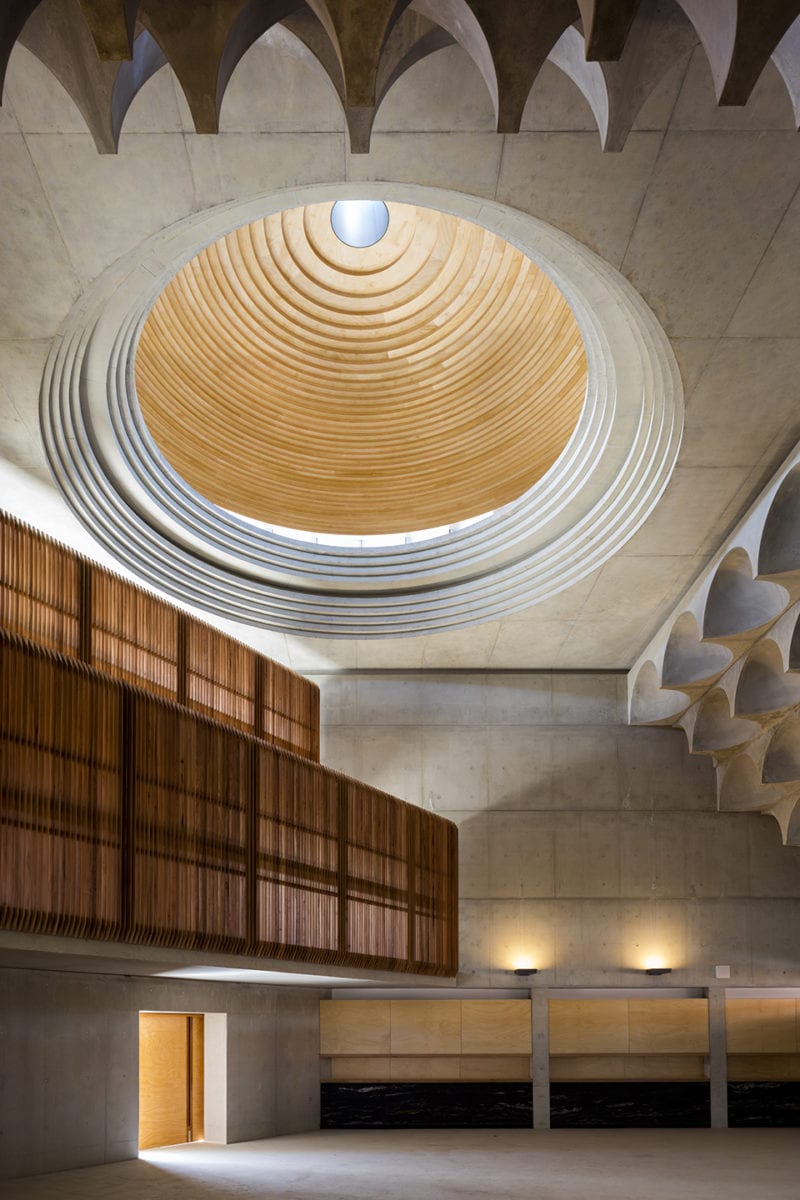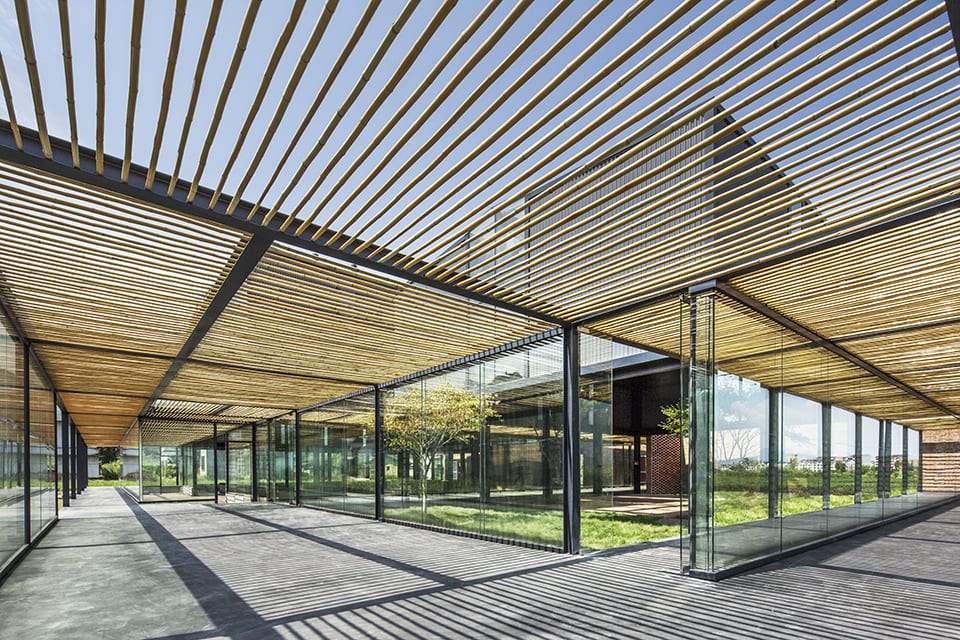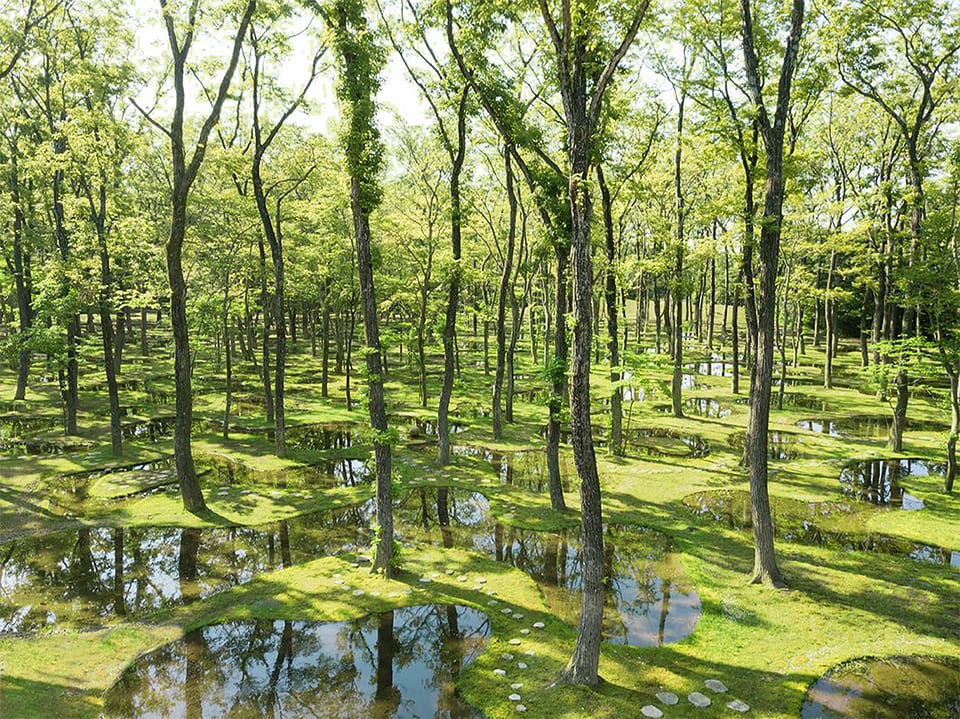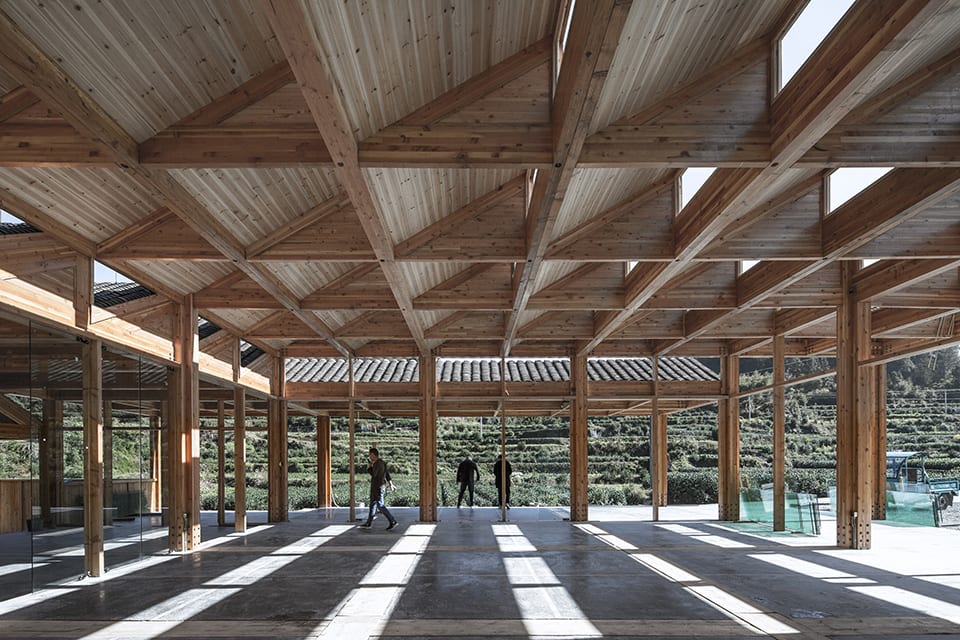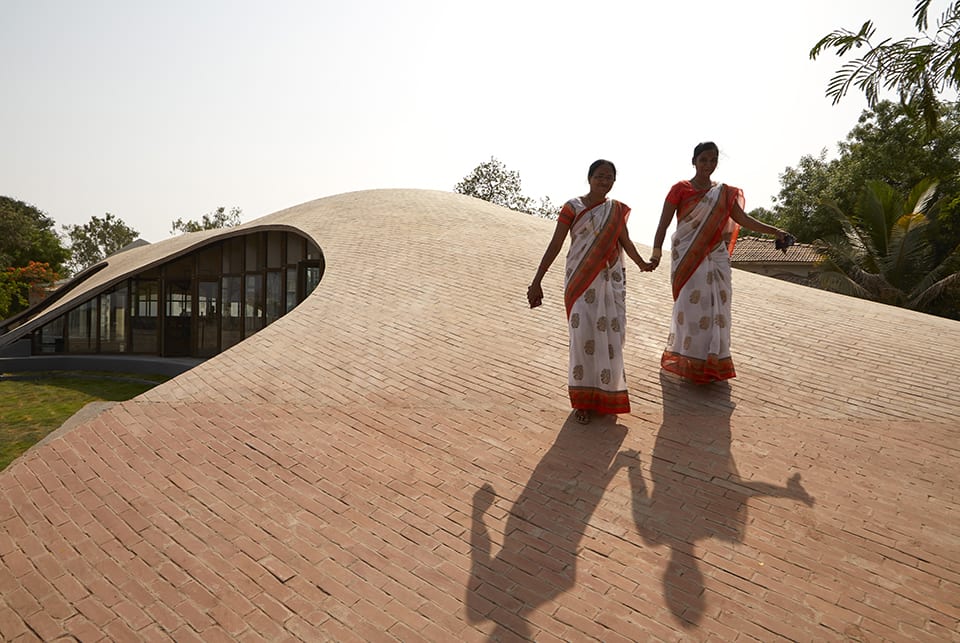How do designers shape the way we understand the world around us, as we tackle the climate emergency, political tensions and digital ethics?
What constitutes good design? The 2019 Beazley Designs of the Year offer a snapshot from the last 12 months, centred around six categories: Architecture, Digital, Fashion, Graphics, Product and Transport. “Really, this is a meta-exhibition,” says Beatrice Galilee, Guest Curator of this year’s show at the Design Museum, London. Galilee was previously Daniel Brodsky Associate Curator of Architecture and Design at the Metropolitan Museum of Art, New York, as well as the Chief Curator of the 2013 Lisbon Architecture Triennale. She sums up her task as organising an array of disparate projects that address a variety of needs and desires. “The scale of what comes in covers all design on the planet, from an app to a car. The only thing they definitely have in common is that they were all produced in the last 12 months.”
The enormous number of entries was selected through a nomination process. Letters were sent to prominent individuals across a range of design practices, inviting them to put forward exceptional projects that caught their attention. The resulting 76 nominees have then been displayed, in one way or another, with winners chosen for each themed category as well as an overall champion. This year, the main prize went to an infographic investigation of an Amazon Echo device, mapping the amount of human labour and natural resources needed for each gadget. Anatomy of an AI System – a large-scale map and long-form essay – was achieved by the co-founder of New York’s AI Now Institute, Kate Crawford, and the co-founder of the Share foundation, Vladan Joler. They join a list of esteemed winners that includes the Turner Prize-nominated Forensic Architecture, Sir David Adjaye OBE and the designers of the London 2012 Olympic torch, Edward Barber and Jay Osgerby.
As Galilee notes, the items on display are largely connected by time – having been made in the last year. However, this does not mean that certain trends or themes haven’t emerged along the way. “The environment was a blanket concern across the whole year,” she says. “Important issues like gender identity also came up in so many different ways, and then there are projects that deal with multiple things at once.” Crucially, she didn’t want to curate in a way that discounted or overlooked these overlaps. “That’s really not the nature of the world we’re living in now.”
To emphasise this point, Pernilla Ohrstedt Studio designed the exhibition space as a set of porous chambers, with holes cut into partition walls. This encourages audiences to see through all the different award categories at once – an innovative organisation that offers dialogues between the nominees, rather than separating them by title or definition. In the Digital room, for example, a wall of Polaroids from artist and researcher Anna Ridler depicts Dutch tulips. The images provide a “training set” for a machine learning algorithm. Nearby, in the Product room, petals fade into murky darkness across a table by designer and artist Marcin Rusak, a memento mori made from real flowers submerged in resin.
Projects like these foreground nature and its precarious place in our globalised and digitalised world. Meanwhile, other designs present practical solutions to environmental issues. American company Lia, for example, has developed a fully biodegradable pregnancy test, whilst Chromat’s
Climatic swimwear collection is made from sustainable regenerated nylon fabric, recovered from fishing nets across the world’s oceans. Browsing the entries of the Graphics category, viewers can find a set of student climate protest placards, made by creative agency ILOVEYOU in partnership with PR firm Play Nice and the UK Student Climate Network.
This attention to the environment – not as an isolated issue but as a topic with direct links to labour, community and pedagogy – is at the core of the Architecture category. “The weight of climate change is very much on all of our shoulders,” says Galilee, specifically noting the impact of concrete. Indeed, cement production accounts for around eight per cent of global CO2 emissions, according to the thinktank Chatham House. “There is so much opportunity to rethink how the building industry operates, and many architects are doing just that. This is an opportunity to have an award which highlights the best practices available today. We all need to change the way we work and think about materials.”
One of the architecture nominees that best exemplifies this isStudio Opalis. The project isn’t a building at all, but an online platform by Belgian design practice Rotor and the Architectural Association. It matches architects and contractors with sources of reusable materials. “It started in a small way – recycling lighting fixtures and tiles – and then they came to realise there were so many more opportunities that could be developed,” explains Galilee. “We can recycle materials from enormous infrastructure and construction projects. We don’t have to be using brand new resources.” This is an approach that Galilee and Pernilla Ohrstedt also decided to show by example at the museum. The exhibition has used recycled material from a previous show, either by simply repainting pre-existing walls or breaking them down to manufacture plinths for the internal displays.
Other nominees echo this idea. The Latraac Skate Café, produced by Zachos Varfis, is the result of taking a derelict 19th century courtyard and transforming it into a community skate park, bar and garden. Ensamble Studio, on the other hand, interprets the theme through prehistoric influences. Ca’n Terra is a subterranean home built into the depths of a former quarry in Menorca, Spain. “It would have been an extraordinary project even back in 510BC,” says Galilee. “It offers one of the most fundamental approaches to architecture: using the cave as a place of shelter.”
The concept of shelter is the inspiration behind another shortlisted project: ProxyAddress, created by British architect Chris Hildrey. It is a system that identifies empty or unused addresses – gathered from councils, housing associations, real estate companies and private donations – and matches these with people facing homelessness. This initiative doesn’t give individuals a place to live, but it does give them a verifiable address they can use to access health and financial services. It also uses Royal Mail’s redirection methods to ensure letters sent to a proxy address are automatically redirected to a place where an individual might be staying short-term, or to a point of collection of their choosing.
“This project is about identifying the dormant power that architecture has,” says Galilee. “It’s about how a system like the Royal Mail’s rerouting service could be aligned with empty homes. This could end up being a lifeline, giving someone an opportunity to open a bank account or get a job. It’s about new ways of looking at what architecture could and should be. What is a home? How do we define its systems in society? A house doesn’t need to be a roof over your head, it could just be a postcode. It could be a main address that stops you falling further into poverty.”
The overall winner of the Architecture category is Maya Somaiya Library, a school building in north east Mumbai, developed by Sameep Padora & Associates. It is inspired by the work of the Uruguayan engineer Eladio Dieste, and is structured around a mound of arches and double curvatures. Its brick roof doubles as a walkable environment for children to play along. Galilee calls it a “thoughtful and global project, which uses local materials and make the childhood experience special.” The overlap between childhood and adulthood also finds a place in Miami College Garage, designed by New York-based architects WORKac, which combines a car park façade with a gallery, a lending library and a children’s play area. Meanwhile, A Room for Archaeologists and Kids presents a timber arcade across one of the most important pre-Columbian archaeological sites in Peru. Developed by students from Studio Tom Emerson, ETH Zürich and Taller 5, Pontificia Universidad Católica del Perú, it forms a place for researchers to work, surrounded by sandpits where school groups can unearth their own findings.
With such a range of nominees, paired with the challenge of representing buildings in a gallery setting, Galilee opted to showcase the Architecture projects through just a single artefact each. “It was really illuminating to be able to talk to [the nominees] about how to present their work, discussing what we would need to capture the spirit of their building.” The artefacts are combined with looped film clips, which are in turn made up of non-verbal footage from the various projects. Cycling through the shortlist in this way, the shared interests are accentuated even more. Audiences move from the vaulted dome of Punchbowl Mosque, designed by Angelo Candalepas and Associates for the Australian Islamic Mission, to the garden pools of Junya Ishigami’s Art Biotop Water Garden, in which hundreds of trees, previously uprooted for construction, have been replanted in a former rice field to create a dense forest, dotted with pools.
In the context of the entire show, ideas, images and inspirations ripple between the categories. Concepts bounce around the space fluidly. There are architectural nominees that are digital systems, digital nominees that are infographical investigations, graphical nominees that are items of clothing and fashion nominees that are digital modelling agencies. The exhibition is a provocation of what its six categories mean. It’s a sign of an industry that is increasingly bleeding across borders and becoming increasingly interdisciplinary. “You just don’t find people relating to one thing anymore,” says Galilee. “Certainly I’d say in the last 10 years people are starting to collaborate so much more.”
So, how do we define successful design? If the Beazley Designs of the Year are anything to go by, perhaps it is a project that refuses to segment itself into a given category. Innovation may be recognised as a mesh of overlapping disciplines, responding to the tangled social, cultural and political issues that make up society. The environment may well be a “blanket concern” for designers working today, as Galilee points out, but the award’s curation suggests that addressing the climate is an intractable task without also considering labour, identity, lifestyle, technology and community. They are all connected, and we should think of them in this way if we are to move forward together.

Punchbowl Mosque by Angelo Candalepas and Associates for the Australian Islamic Mission. 
The Songyang Story by DnA_Design and Architecture. 
Art Biotop Water Garden by Junya Ishigami. 
The Songyang Story by DnA_Design and Architecture. 
Maya Somaiya Library by Sameep Padora and Associates.



